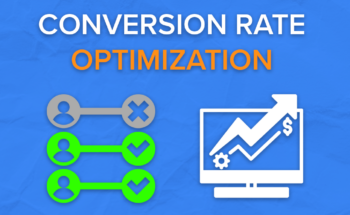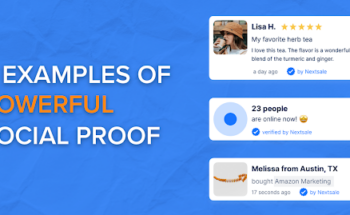
“I have a great website design and high-quality products, why still the site’s traffic and sales volume are so low?”
Hopefully, you have never asked this question to yourself. If you do, then you need to rethink the product description.
If you think that product description is only for sales, you have been wrong. When it comes to the product description, you need to see it as a part of your marketing strategy.
Does product description affect SEO ranking? What are the mistakes you should avoid?
In this article, I will answer these questions.
Let’s dive into the topic right away.
PS: from now on, each week, I will try my best to help your business more with sharing critical eCommerce practices that you may unknowingly neglect. These articles will be short (I hope) and sharp, so you need to spend only 3-5 minutes on improving your site’s standing. It would be vey kind of you if scroll down this page and subscribe to our newsletter.
Product Description for SEO
The answer to the above-mentioned question is yes; product description affects your site’s SEO. Product SEO helps grow organic traffic, conversions and sales.

As you may know, Shopify hosted websites are different for their better ranking. Shopify has case studies about the correlation between increasing sales and SEO after migrating to Shopify Plus platform. One of them is BlackJoy that confirms their sales increased by 102% after migrating to Shopify, and sales come from organic traffic. Overall they have 71% increase in revenue.
One question arises here:
Which eCommerce platform has a better ranking in search engines: WordPress or Shopify?
I would answer this question like this: it takes less time to rank by Shopify since it gives you a platform that is perfectly designed for SEO. On the other hand, you need to spend relatively much time on WordPress hosted sites. However, with the help of Yoast, APM, and other plugins for search optimization, in the end, SEO results will be the same as Shopify.
I promised myself that in this new series, I would write short and precise, but here I am almost comparing WordPress and Shopify. Anyway, there is no such thing as a waste of time for learning new things.
OK, now back to the topic. You saw that product organic traffic increases sales in the examples of Shopify. And, a product description is vital for increasing organic traffic since it is a content consisting of keywords.
Here is the checklist to consider when writing the descriptions:
- Write for the people, not for the bots
- Create unique content on every PDP
- Consider specific keywords and SD
- Focus on the features
Write for the people, not for bots
I cannot stress enough how usability is important for search engine bots. Since Google has 2.5 trillion searches per year, I will mostly mention it rather than Bing.
So, yes. Google put user experience above anything. The goal of writing a good description for a product (besides demonstrating the features, of course) is to help the users find your product. Thus, consider users, not Google’s spiders.
Think it over; Google can change the meta descriptions on SERP, taking the most relevant part to show the user. Note that each user can see different results depending on their queries.
Create unique content
Even if you sell one type of product, say bags, every one of the product detail pages (PDP) needs to have unique content.
Don’t think that if the copy is original for your site only, you can use it across the website. Google Search Console Webmasters advise avoiding “having duplicate or near-duplicate versions of your content across your site.” Even, it says not to use little changed – rehashed copy as well.
Plus, don’t use manufactured descriptions like this:
Firstly, it is not good for readability, and secondly, words like feature, item type, style are in all of the PDP. Also, manufacturers share this kind of information with hundreds of merchants, they probably use it too.
You might think that, then, “how can I show the features?”
One and hard way is to write as unique as you can. It is harder because sometimes you may run out of ideas and creativity. Keep in mind that the length does not matter. 2-3 sentences are enough, even ideal, unless the copy is not duplicate.
In this case, alternatively, I would write this kind of information like features and specifications on an image. Then optimize it by writing an image alt attribute. It is not the best solution but so far an efficient way for both showing product specifications and avoiding duplicate content.
If you cannot do it, then submit the product pages that don’t have unique content as no index. It is better to prevent duplicate pages from crawling than hurting your website’s ranking. Or, your pages will look spam and get penalized. Plus, don’t use ifmares for content. Your content should exist on pages.
If you want to prevent most of the search engines or just Google to crawl your certain page you need to do the following:
Place the following into the <head> section of your page that you don’t want search engines crawl:
<meta name=“robots” content=“no index”>
For Google bots, you need to use:
<meta name=“googlebot” content=“no index”>
Consider Specific Keywords and SEO Difficulty
Say you want to optimize a black backpack’s product page. What keyword should you choose? Black backpack? Or a large black backpack? None of them. These kinds of keywords’ SEO difficulties are high, meaning that it is hard to rank for these keywords because of high competitiveness.
Unless you are a well-famous brand like Gucci, Google is not gonna rank you for too general keywords.
There are several ways to check SEO difficulty, and one easy way is to use Ubersuggest.
Here you see that for “black backpack”, SD is 57 – it is more competitive.
You can add a specific feature of the product like “black backpack laptop pocket.”
This keyword’s SD is quite good, but the monthly search volume is very low. It would be best if you find a keyword that search volume is high and SD is something under forty, as Neil Patel himself suggests. Keyword research requires much time, but if you do, you will see the results.
Pay Attention to Wording
In the product description, you need to focus on mentioning the important features like being water-resistant, shockproof, or distinctive material.
Remember that words sell; your strongest weapon is how you describe and present your product.
You can check the ultimate list of words that sell on HubSpot.
If you don’t have too much to say about products, use visuals. It can be GIFs, videos, or just high-quality images can be enough. Also, don’t forget to have the zoom feature in the image section. According to Baymard’s study, the level of resolution and zooming affect the purchase behavior of the users.
Read also why product images matter.
What’s Next
Many merchants unknowingly put aside product description when optimizing their sites for search engines because it is hard to focus on and try to improve all sides of the eCommerce business. Thus, we – Nextsale thought that it would be ideal if we help you see some little but crucial issues that you may have neglected. Next time, I will be discussing internal linking and its effect on SEO. Stay updated!




